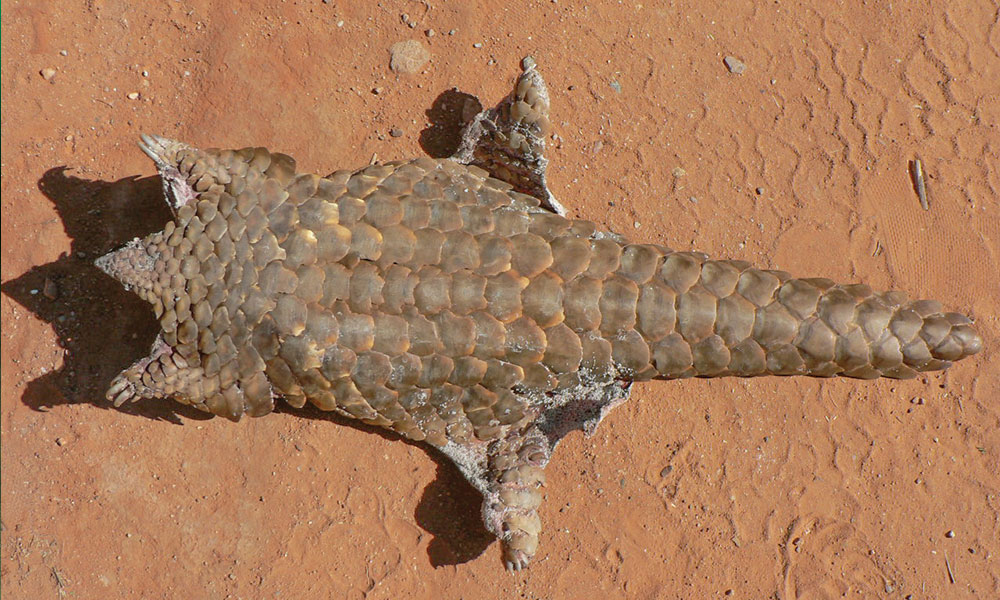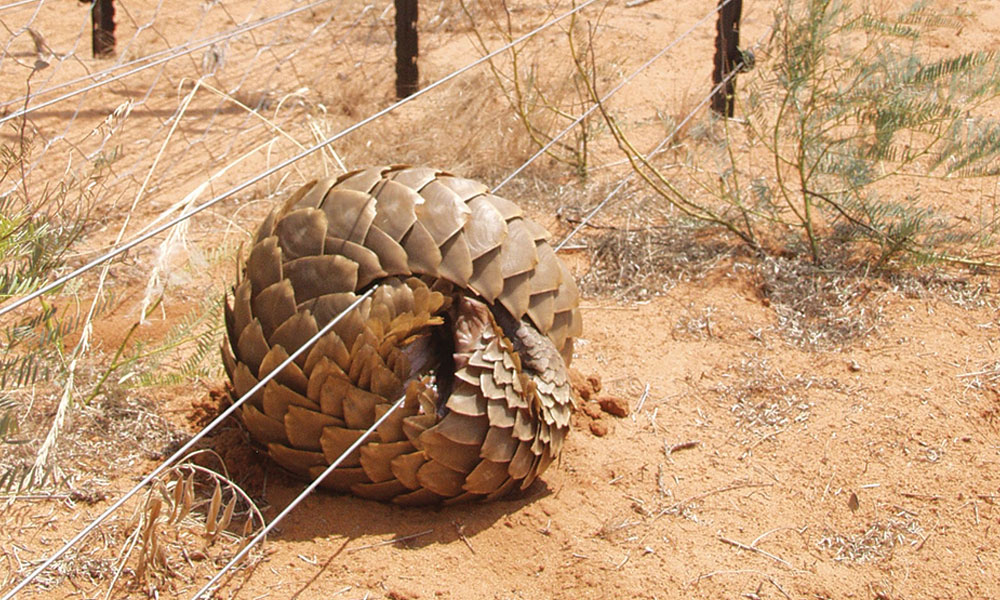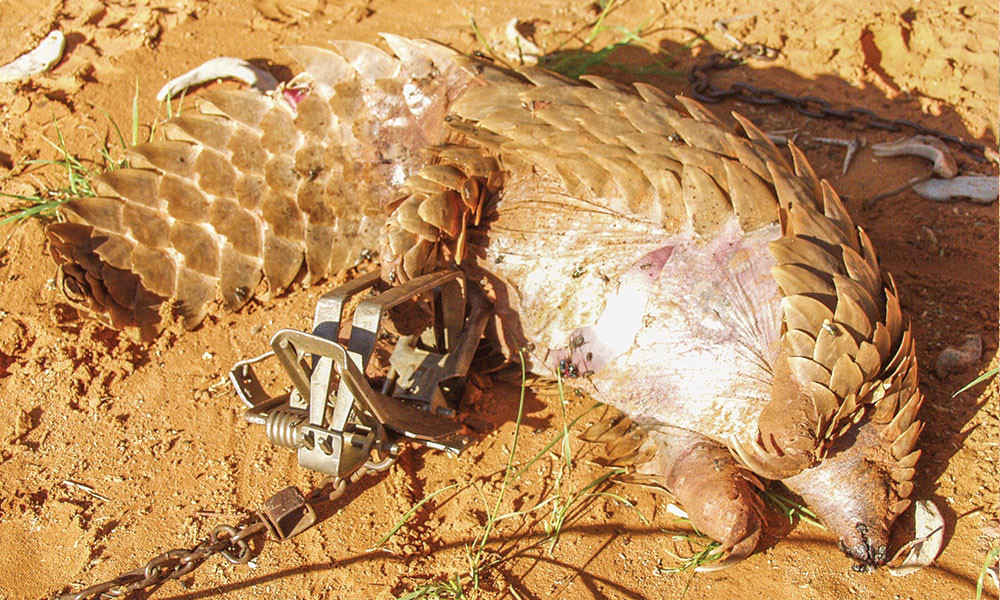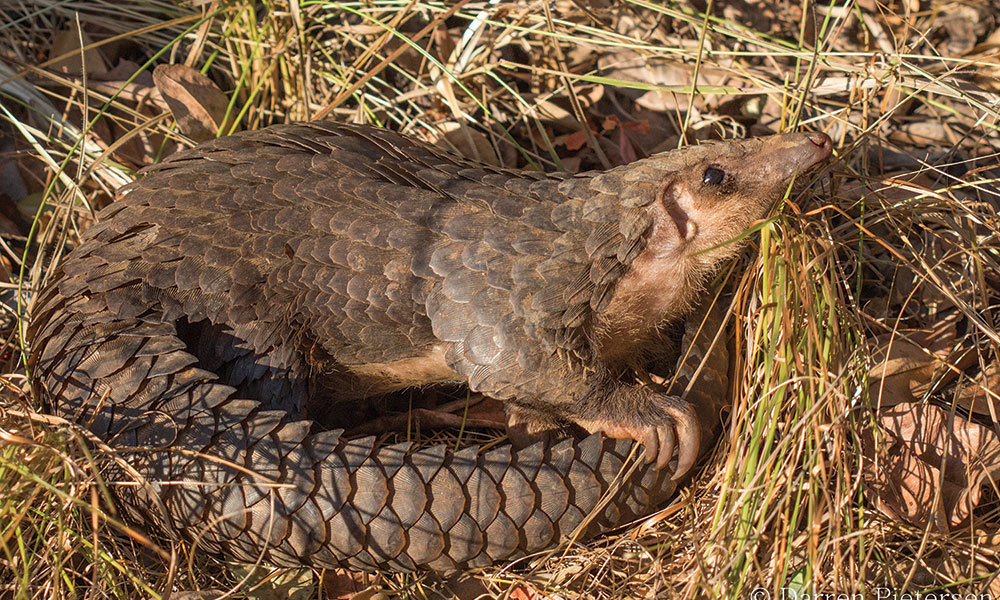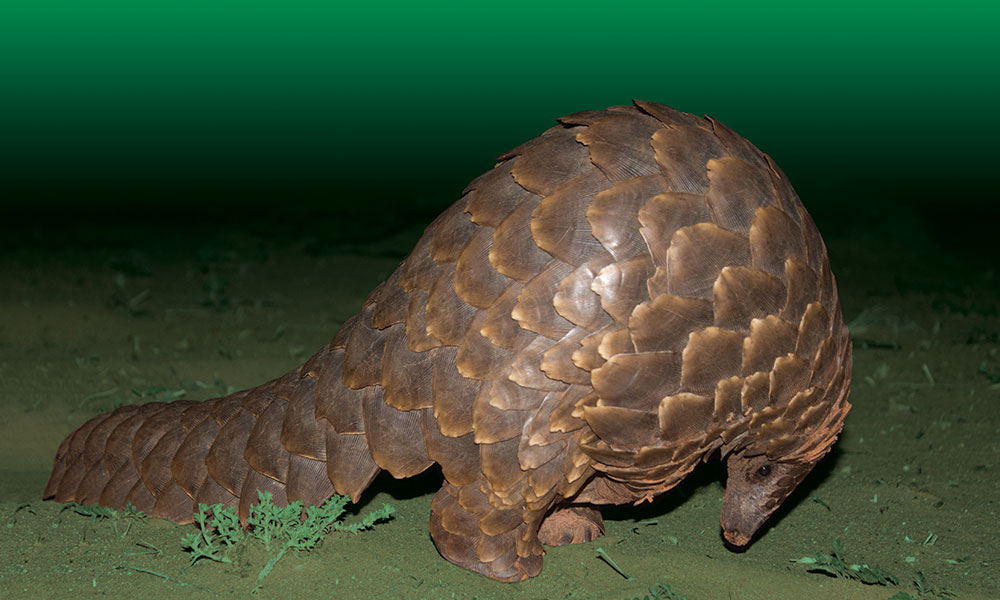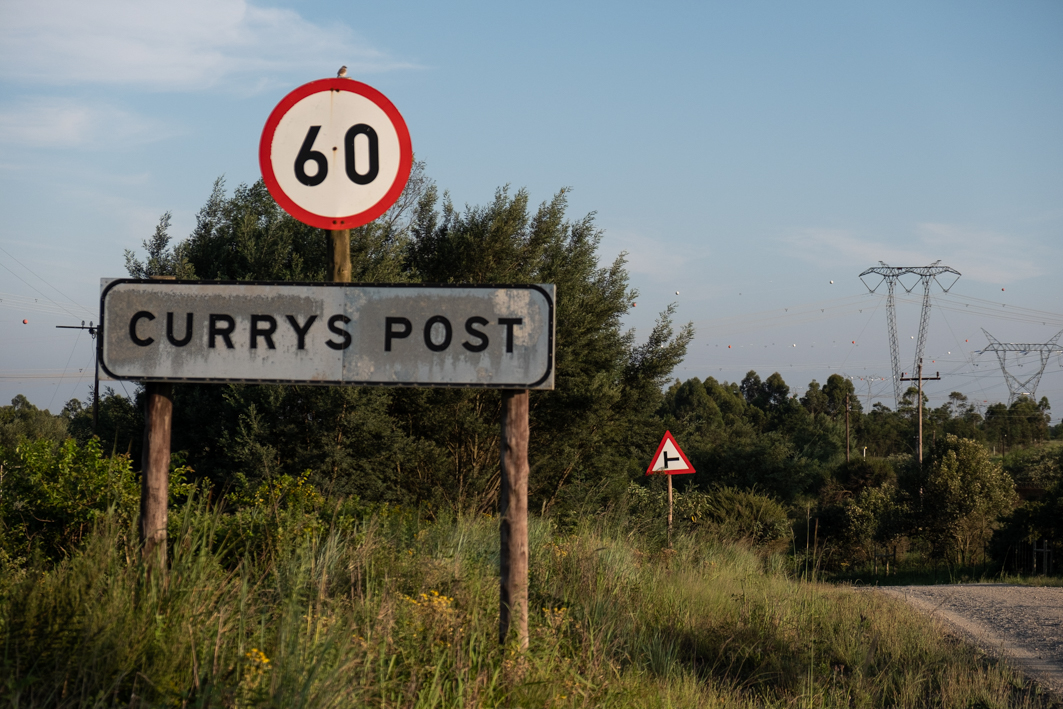Chinese police recently intercepted a boat in the sea off Zhongshan City, west of Hong Kong. Law enforcement authorities found 1.6 tons of pangolin scales, concealed in 76 bags. Most of these scales were from African pangolins. Today, writes Scott Ramsay, the pangolin is the most trafficked wild mammal in the world.
According to pangolin biologist Dr Dan Challender, scales can make up 20 percent of a pangolin’s weight. The seized shipment probably meant the death of at least 4 000 of these remarkable scaly creatures, which are not reptiles but a unique evolutionary line of mammal. Challender is a leading member of the Pangolin Specialist Group at the International Union for Conservation of Nature’s (IUCN) Species Survival Commission. He’s also an expert in understanding how trade in wildlife is driving pangolins to the precipice of extinction. “The threat to pangolins has increased drastically in the past few years,” says Challender. “Based on estimates, a pangolin is taken from the wild every five minutes. All eight species of pangolins in the world are now listed as vulnerable, endangered or critically endangered by the IUCN.”
Pangolins are among the most trafficked animals in the world. The US Fish and Wildlife Service estimates that more than a million pangolins have been poached from the wild and traded illegally between 2006 and 2015. While Asia’s four species of pangolins are most heavily trafficked, Africa’s species are increasingly at risk. “There has been less recorded trade in African pangolins, but we can’t be sure of figures, because reliable data is hard to find,” says Challender. Most international demand for pangolin body parts comes from Asia, specifically China and Vietnam, where the scales are fried, then ground up into powder and mixed with other traditional medicines. Consumers believe the pangolin powder helps cure skin diseases and cancer, improves blood circulation, and stimulates milk secretion in lactating women. In other parts of Asia, children wear the scales around their necks to ward off evil spirits.
Even though the sale of pangolin meat is illegal in China, it is still sold in high-end luxury restaurants, and is often eaten at the conclusion of a successful business deal. “Live pangolins are brought into the restaurants and killed in front of the dinner guests, who then eat the meat afterwards. I’ve seen this for myself while in Vietnam doing research,” says Challender. The scales, which are keratin (the same protein as human nails or rhino horn), can sell for up to $600 per kilogram in China. The meat currently sells for about $300 per kilogram.The Convention on International Trade in Endangered Species (CITES) lists all eight pangolin species on Appendix II, which “includes species not necessarily threatened with extinction, but in which trade must be controlled in order to avoid utilisation incompatible with their survival.”
“In Asia, zero export quotas are in place, which effectively prohibits trade in wild-caught pangolins,” says Challender. “In Africa, permits can still be issued for their trade.” By 1995, when the pangolin species native to China had become commercially extinct, poachers turned to South-East Asia and to Africa’s pangolins to supply the Chinese markets. “Today, these are the same syndicates that illegally trade elephant ivory, rhino horns and body parts of other rare or endangered species,” says Challender. “Authorities regularly find illegal ivory together with pangolin scales when they seize shipments.” In Africa, pangolins are targeted for food, for traditional medicinal use and, more worryingly, for trade to Asia. A single specimen can sell for several thousand dollars.“Pangolin species are victims of rampant bush meat trade that inflicts barbarous cruelty on these animals by hanging them alive, or half-alive, beside roadside stalls,” writes Jonathan Kingdom in his Field Guide to African Mammals. “It is symptomatic of the trade’s exterminating rapacity that stalls which mostly sold buffalo, duiker and monkey meat a few years ago are now falling back on remnant species such as pangolins.” All four species of African pangolins are nocturnal and famously secretive. They almost exclusively eat termites and ants, using their lengthy sticky tongue to extract the insects from nests and mounds.
They have no teeth, but swallow soil to help grind up the termites and ants inside their stomachs. African pangolins give birth to a single offspring, which will ride on the tail of its mother until they’re old enough to forage for themselves. Most pangolin species, including the African ground pangolin, live for about 20 years, but they can’t survive in captivity for long. Challender’s own interest in pangolins arose during a visit to a South African game reserve. “On my first trip to SA in 2005, I was looking through a field guide and to me it was the weirdest creature I’d ever seen. Just look at the pangolin – there’s nothing else like it. But we are running out of time to make sure they don’t disappear forever.” Challender believes a multi-faceted approach to pangolin conservation is essential.
“We need to reduce demand through public awareness in Asia, we need to give local communities incentives to conserve pangolins, and we have to clamp down on the criminal syndicates that trade in wildlife.” Currently, only the ground pangolin from Africa is listed on the USA’s Endangered Species Act. There is strong support for the other seven species to be listed. Because all pangolin species look so similar, law enforcement authorities have difficulty in distinguishing between them. “The Endangered Species Act is among the strongest conservation laws in the world, and listing all pangolin species under the Act will be a dramatic and positive step to saving the pangolin from extinction,” said Adam Roberts, CEO of Born Free USA and the Born Free Foundation.
Photos: Darren Pietersen
